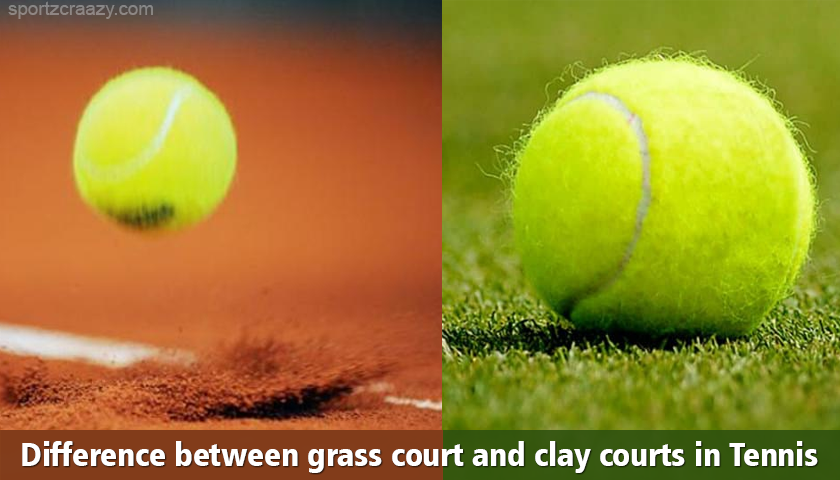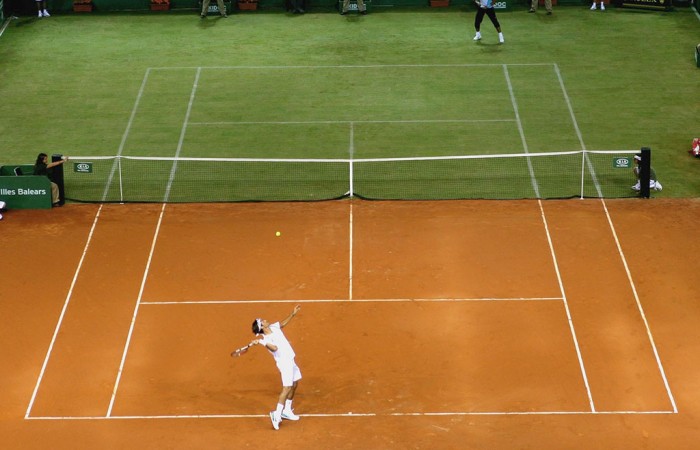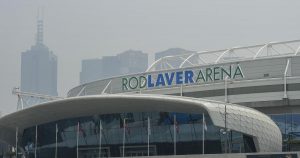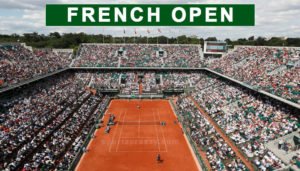Tennis tournaments across the world are played on a range of different surfaces, each of which has its own characteristics that impact the match in a different way. The four most common types of a tennis court are hard courts, clay, grass, and carpet (or synthetic turf). Out of the four Grand Slam events, the US Open and Australian Open are both played on hard courts, Roland Garros (French Open) is played on clay, and Wimbledon is played on grass.
The different courts and surfaces will affect how the game is played meaning players will always have a favoured surface. Below we’ve explained how the key characteristics of the four most common tennis courts the impact they have on the game
Clay court and Grass court in Tennis
It’s quite often when we get to hear that a certain Tennis player is a “Master of clay court” while the other one is a “Perfectionist of Grass court” but still there aren’t many of us who knows the difference between a Grass court and a Clay court.
Though we understand the fact that Clay courts are made of “Clay” and the same definition goes for the Grass courts, the Rules and Formats of the game remain the same during the course of the match in both types of surfaces. Still, there are a number of key differences which we can list down below between a Clay court and a Grass court.
What is Clay Court?
As the name suggests, The Clay courts are generally made up of clay along with crushed shale, Stone or Brick. The Tennis clay courts are generally made up of various types of clays such as Red, Green, Blue, Maroon, Yellow and Gray. All of these mentioned clay courts are hard on their surfaces and found to be very difficult to play on due to their slow nature.
Amongst the same, Red clay courts are considered to be the slowest while the Green Clay courts are said to be the fastest amongst the rest of the Clay court surfaces.
Positive sides of the Clay courts
Although Clay courts are infamous for being the slowest of the surfaces to play the Tennis on, It always facilitates an even bounce and carry for the Ball even while the ball has been hit with immense power by the Tennis player. Moreover, it takes a lot of endurance, strength and stamina to play on a Clay court surface for long hours and this is the reason why it has always been quoted as one of the most demanding Tennis playing surfaces around the world
Downsides of the Clay courts
The Clay courts are said to be drying off very quickly and that’s why they need to be kept wet all the time to ensure favourable playing conditions for all the players who are playing on the surface.
Famous Clay Court Tournaments and players
While there are a number of tournaments which gets played on Clay courts every year, French open is the most famous tennis tournament amongst all those. Played between May and June every year, the tournament sees some of the best players from the Tennis world to come on board to place their contention for the coveted Grand slam event.
Talking about the Players, Rafael Nadal is the most successful Clay court tennis player with 10 French open titles under his name and often been called “Master of the Clay Court”
What is a Grass Court?
Quite simply, we can ascertain that Grass courts are made up of Rye Grass in different compositions, prepared as per the needs and demands of Different Tennis Tournaments. The Composition of the Grass is usually kept different in different tournaments and that’s is something which makes Grass courts one of the most Versatile tennis playing surfaces around the world.
Positives of the Grass courts
While we understand that the Grass courts are skiddy and smooth in nature, it demands more speed and agility in the game of the players playing through. That’s why most of the experienced players always have an upper hand on these types of courts.
Downsides of the Grass courts
It is always been found that the Ball often skids and stay low on the bounce on these courts due to their slippery nature. Moreover, these courts are very high on the maintenance part and this is the reason, they attract more cost towards their maintenance in comparison to any other types of Tennis courts.
Famous Grass courts Tournaments and players
Wimbledon Tennis Championship is said to be the most elite Grass court Tournaments around the world and the Tournament gets played in the month of July in England every year. Talking about the most Successful Grass court player, Roger Federer from Switzerland can be said to be the “Master of the Grass court” in the Entire Tennis championships history with 10 Wimbledon titles under his name.
Major Differences between Clay Courts and Grass Courts
Materials and Components used
Clay courts are generally made up of Crushed shale, Stone or brick and come in different colours like Green, Red, Maroon, Gray and Yellow. On the other hand, Grass courts are generally made up of Grass which is grown on some hard-packed soil. Their surface can be quoted as similar to what is been used in the Golf.
Global Outreach
If we talk about the Global outreach and usage of Clay courts, these are one of the most used across various parts of Globe like Continental Europe and Latin America. On the other hand, Grass courts are mostly famous in the territories of Britain and some parts of Europe.
Playing Strategies
While we have understood by now that Clay courts mostly support a high bounce on the surface with a slow carry, it mostly favours the players who usually take their time in preparing strategies according to the demands of the game. On the other side, Grass courts don’t allow the players that much of time as the ball bounce is quite low here with a big skid and carry along. That’s where they need to act fast and make their plans in lesser time.
Physical Demands of the game
While playing on a clay court, the players need to be strong and full of stamina to make it go good with the slow playing nature of the Clay surface. On the other hand, Grass courts demand more speed and agility from all the players playing along as the ball stays low and skiddy on these courts generally.
Water Absorption tendency
Clay courts are known for their Water holding capacities as most of the components of the clay absorb water at a much rapid speed. On the other hand, Grass courts are usually roped off to make them run out of water during the matches. This process gets through to eliminate the slippery conditions to avoid any kind of injury to the players involved.
Cost of Maintenance
Clay courts are said to be low on maintenance as the components used while making the Clay courts are not that expensive and easy on Maintenance. On the other hand, Grass courts come with a high maintenance cost as the Grass needs to be cut off and maintained in different compositions to make them serve best to the demands and requirements of the game.
Also Check :











